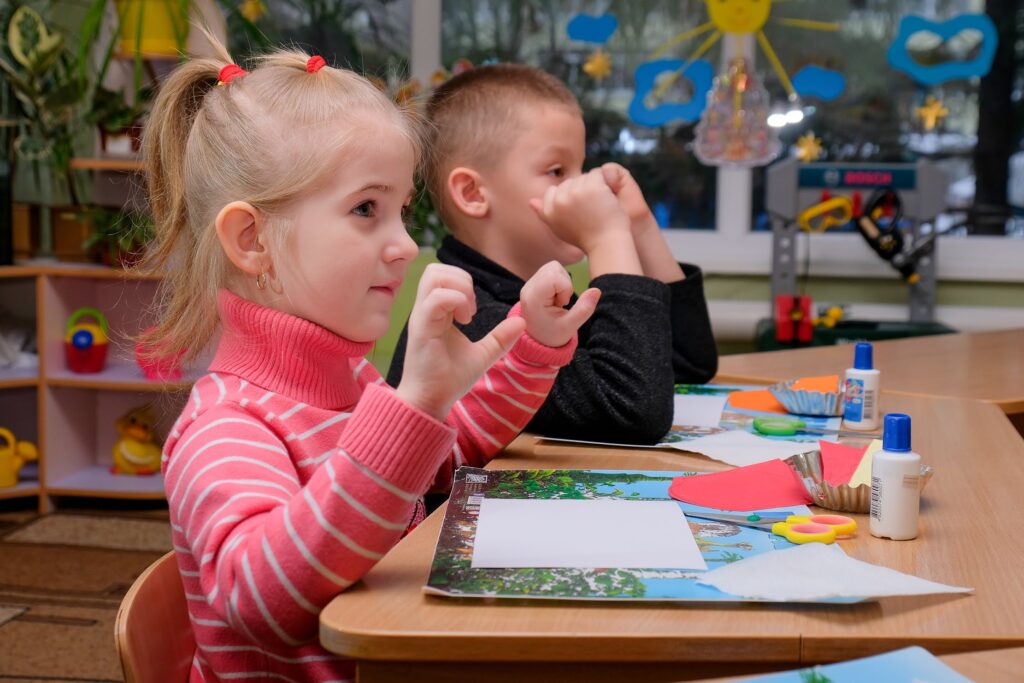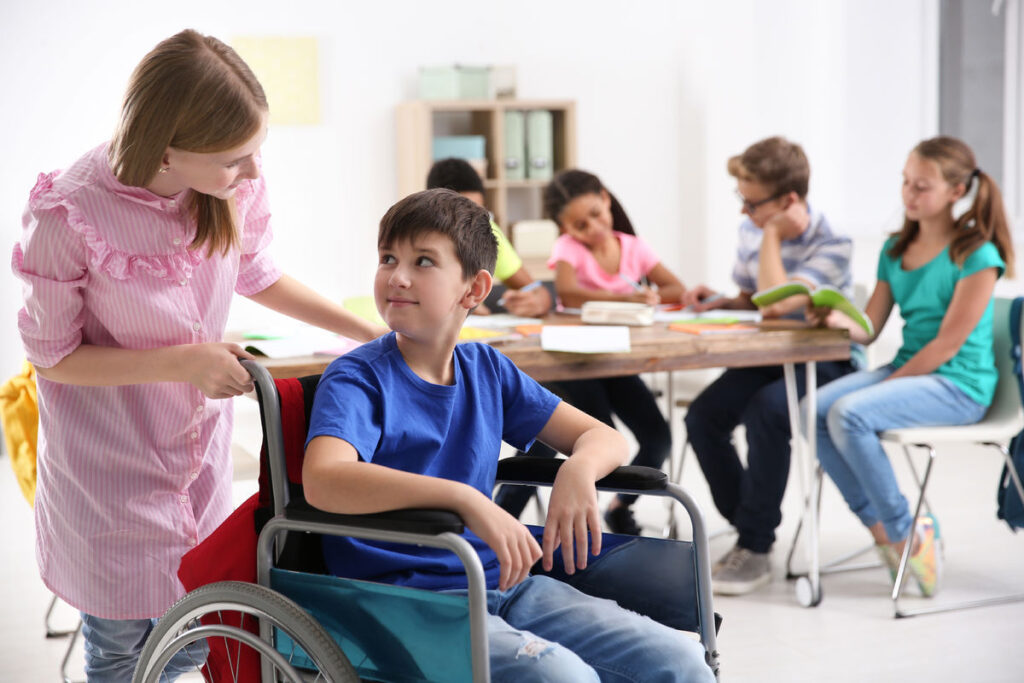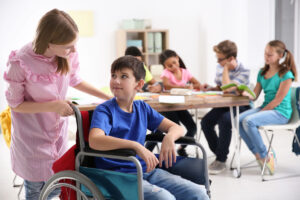Methods and techniques for working with children with special educational needs

Methods and techniques for working with children with special educational needs
Correction training, as studies have shown, is not just an additive to general development work with children. It is a condition for overcoming or alleviating some of the difficulties arising from a biological impairment, but, most importantly, it is at the heart of the personality formation of a child with a developmental disability.
Based on the different content of special remedial education for schoolchildren with intellectual disabilities, they studied the effect of certain factors that significantly enrich the process of personality formation. With the same volume and content of remedial education, which forms the child’s moral, aesthetic and creative abilities, the dynamics of personal development are more visible than the result of the development of mental functions. The latter is limited by the age possibilities of the pupil and is to a greater extent inhibited by the gravity of the biological disorder, which cannot be fully overcome. At the same time, if any direction of correctional education has essential influence on formation of personal properties and qualities, then this influence cannot be ignored on development of all mental functions.
An important factor in the formation of the personality of children with disabilities is not simply comprehensive education, but the organization of pedagogical impact on the principle of a holistic system of special education. At the same time, the result is expressed not in certain skills, abilities and character traits, but in the form of personal neoplasm reconstructing the whole set of connections and relations of the child with the surrounding reality.
At present, there are more than 2 million children with disabilities in Russia (8% of all children), of whom about 700,000 are disabled children. In addition to the growing number of almost all categories of children with disabilities, there is a trend towards qualitative changes in the structure of the defect and the complex nature of violations in each individual child. The education of children with special needs and of disabled children requires the creation of a special remedial and development environment ensuring adequate conditions and equal opportunities with ordinary children to receive education within the framework of special educational standards, treatment and health improvement, upbringing and training, correction of development disorders, and social adaptation.
The education of children with special needs and children with disabilities is one of the basic and inalienable conditions for their successful socialization, their full participation in society and their effective self-realization in various professional and social activities.
In this connection, ensuring the realization of the right of children with special needs to education is seen as one of the most important tasks of State policy not only in the area of education but also in the demographic and social and economic development of the Russian Federation. Read more nere https://argoprep.com/blog/helping-special-needs-children-excel-in-school/
The Constitution of the Russian Federation and the Education Act state that children with development problems have equal rights to education with all. The most important task of modernization is to ensure access to quality education, its individualization and differentiation, to systematically raise the level of professional competence of teachers in correction-development education, and to create conditions for achieving a new modern quality of general education.
PECULIARITIES OF CHILDREN WITH LIMITED HEALTH CAPABILITIES.
Children with special needs are children whose state of health prevents them from mastering educational programmes outside the special conditions of their education and training. The group of schoolchildren with disabilities is extremely heterogeneous. It is determined, first of all, by the fact that it includes children with different developmental disorders: hearing, vision, speech, musculoskeletal system, intellect, with pronounced emotional and volitional disorders, with delay and complex developmental disorders. Thus, the most important priority in working with such children is an individual approach, taking into account the specifics of each child’s mentality and health.
Special educational needs vary among children of different categories, since they are defined by the specifics of mental development disorders and determine the special logic of the educational process, and are reflected in the structure and content of education. At the same time, the special needs of all children with disabilities can be identified:
- to start special education of the child as soon as the primary developmental disorder is identified;
- introduce special sections in the content of the child’s education that are not present in the education programmes of normally developing peers;
- use special methods, techniques and means of education (including specialized computer technologies) that ensure the implementation of “workarounds” of education;
- Individualize learning to a greater extent than is required for a normally developing child; use special methods and tools of learning (including specialized computer techniques that enable the implementation of ‘workarounds’).

Traditional reproductive education, the passive subordinate role of the learner cannot solve such problems. Their solution requires new pedagogical technologies, effective forms of educational process organization and active methods of learning.
Cognitive activity is the quality of a student’s activity, which is manifested in his attitude to the content and process of teaching, in the desire for effective mastering of knowledge and methods of activity for the optimal time.
One of the basic principles of education in general and special pedagogy is the principle of consciousness and activity of students. According to this principle, “learning is effective only when students show cognitive activity, are subjects of learning”. As Yu. K. Babansky pointed out, students’ activity should be directed not just to memorizing the material, but to the process of independent acquisition of knowledge, research of facts, revealing mistakes, formulating conclusions. Of course, all this should be done at a level accessible to pupils and with the help of the teacher.
The level of cognitive activity of students is not sufficient, and the teacher needs to use resources to increase it. One of the characteristics of students with developmental problems is that all mental processes are not active enough. Thus, application of means of activization of educational activity in the course of training is a necessary condition of success of process of training of schoolchildren with developmental problems.
Activity is one of the most important characteristics of all mental processes, largely determining the success of their course. The increase in the level of activity of perception, memory and thinking contributes to more effective cognitive activity in general.
When selecting the content of classes for students with disabilities, it is necessary to take into account, on the one hand, the principle of accessibility and, on the other hand, not to allow excessive simplification of the material. Content becomes an effective means of activating learning activities if it is appropriate to children’s mental and intellectual capacities and needs. As the group of children with disabilities is extremely heterogeneous, the task of the teacher is to select the content in each specific situation and the methods and forms of organization of education adequate to this content and to the possibilities of learners.
There are several classifications of methods that differ according to the criterion on which they are based. The most interesting here are the two classifications.
One of them, proposed by M. One of them is proposed by M. N. Skatkin and I. Y. Lerner. According to this classification, methods are distinguished depending on the nature of cognitive activity, the level of activity of students.
The following methods are singled out in this classification:
- explanatory-illustrative (informative-receptive);
- reproductive;
- partially searchable (heuristic);
- problem statement;
- exploratory.
Another, the classification of methods for the organization and implementation of educational and cognitive activities; methods of its stimulation and motivation; methods of control and self-monitoring, proposed by Yu. K. Babansky. This classification is represented by three groups of methods: - methods of organization and realization of educational and cognitive activity: verbal (story, lecture, seminar, conversation); visual (illustration, demonstration, etc.); practical (exercises, laboratory experiments, labor actions, etc.); reproductive and problem-search (from private to general, from general to private), methods of independent work and work under the guidance of a teacher;
- methods of stimulating and motivating educational and cognitive activity: methods of stimulating and motivating interest in the teaching (the whole arsenal of methods of organizing and carrying out educational activity for the purpose of psychological adjustment, inducement to the teaching), methods of stimulating and motivating duty and responsibility in the teaching;
- methods of control and self-monitoring over the effectiveness of educational activities: methods of oral control and self-monitoring, methods of written control and self-monitoring, methods of laboratory and practical control and self-monitoring.
The most acceptable methods in the practical work of the teacher with students with disabilities, we consider explanatory and illustrative, reproductive, partially searchable, communicative, information and communication; methods of control, self-monitoring and mutual control.
The group of search and research methods provides the greatest opportunities for students to form cognitive activity, but to implement the methods of problem education requires a sufficiently high level of formation of students’ ability to use the information provided to them, the ability to independently seek ways to solve the problem. Not all younger schoolchildren with disabilities have such skills, which means they need additional help from a teacher and a speech therapist. Increase self-sufficiency of disabled students, especially children with mental retardation, and introduce them into training.
